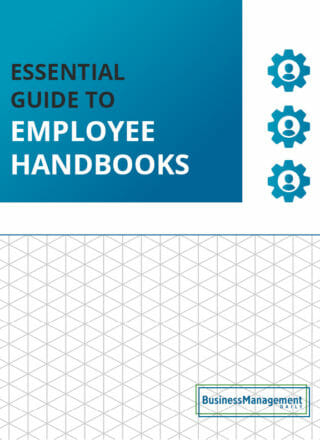Top 10 causes of stress at work (and what you can do about them)
We all have to contend with workplace stress, and according to the evidence — it’s at an all-time high right now. The proof? 83% of workers in the US now suffer from work-related stress, and businesses regularly lose up to $300 billion annually due to its negative effect on productivity.
When stress levels become too high, they can negatively impact an employee’s physical and mental health.
For instance, ‘burnout’ is a workplace phenomenon brought on by work stress that can wreak havoc on one’s personal life and has been linked to several physical health conditions. These include:
-
High blood pressure
-
Heart disease
-
Depression
Burnout has become so prevalent that the World Health Organization (WHO) included it in the 11th Revision of the International Classification of Diseases (ICD-11) as an occupational phenomenon in 2019. Yet burnout is only one of the significant causes of stress at work; there are many others.
Whether you’re stressed out over financial issues, a lack of job opportunities, or a particularly toxic coworker – there are almost too many stressors at work to count.
We’ve compiled a list of the top 10 stress causes at work and ways to mitigate them. So, let’s look at ways to improve your work environment and reduce job stress for both yourself and all employees at your organization.
Why managing work-related stress is a must for any organization

There are many reasons why organizations should care about their employees’ stress levels, and stress management is crucial.
First, there’s the moral issue.
Every organization should invest in the well-being of its employees not only to ensure better work performance but also because it’s the right thing to do. It’s no secret that your employees want to know that you care about them and not just about the work they provide.
Beyond that, stressed-out employees who are experiencing burnout are far less productive. According to this study published in the International Journal of Productivity and Performance Management, elevated stress levels lead to reduced productivity, while increased satisfaction leads to increased productivity.
As stated before, US companies lose $300 billion each year due to the adverse effects of high-stress levels.
One significant cause is absenteeism, where employees continue to show up each day but need more work done. Companies also lose money from having to provide time off and treatment for stress-related health problems. So, to gain a reputation as a fair organization while earning more revenue annually, you need to take stress management seriously.
There’s also the issue of high employee turnover.
If employees routinely leave your company in droves, it’s often a sign that the work environment is particularly stressful, precisely what this study found.
Last but not least, it’s your legal duty to ensure the effects of stress aren’t causing employee health problems. If they are, it’s your responsibility to treat the health issues of those employees, as well as make adjustments to make the work environment less stressful.
The top 10 causes of stress at work
Many stressful situations can arise at work, such as a difficult coworker or a heavy workload that you can’t keep up with. From unrealistic deadlines to a lack of support from managers, there are many ways that work-related stress can begin to manifest.
Without further ado, these are the 10 most common causes of stress that employees report dealing with the most.
#1: A toxic work environment
Many of us have had to deal with a ‘toxic’ workplace at one time or another, much to the detriment of our physical and mental health.
But what makes a workplace toxic?
A toxic work environment or culture is one where drama, chaos, and dysfunction reign supreme — instead of teamwork, accountability, and order. Regular bullying, micromanaging, and harassment are all hallmarks of a toxic workplace.
This environment can wreak havoc on employees’ morale, well-being, and health. It can be incredibly frustrating to continually show up to an office with such palpable negative energy, leading to high-stress levels and burnout.
Beyond its detrimental effect on staff, a toxic workplace does no favors for the business, either.
Toxic work environments cost businesses $44 million annually due to high turnover and lost productivity. Not only that, but the Society of Human Resources Management estimates that 1 in 5 employees have left a toxic workplace at some time in their careers.
Fixing a toxic work environment
With all this evidence, it’s clear that toxicity is a leading source of stress for employees. That’s why you should take measures to improve the quality of your work environment.
How can you do that?
There are several ways, including:
-
Audit your managers and get rid of any fear-based techniques.
-
Communicate meaningfully and effectively while congratulating employees when they do good work.
-
Encourage a feedback culture to combat workplace bullying and harassment.
-
Live by your core values while enforcing them.
These are all candid ways to clean up a toxic office.
#2: An excessive workload
76% of employees state that their heavy workload is their most significant stress factor on the job. It’s easy to understand why long hours and unrealistic deadlines are bound to cause anyone stress after a while.
In particular, excessive work volume can throw employees’ work-life balance out of whack.
They will have less time to spend with loved ones and are more likely to worry about deadlines and upcoming tasks at home. That can lead to depression, insomnia, high blood pressure, and other adverse conditions.
There’s also the stigma that burnout only happens to disengaged employees who aren’t passionate about their work. However, that’s not the case.
Deloitte surveyed Workplace Burnout, and their findings were surprising. Of the 87% of professionals who claimed they had a burning passion for their work, 64% still reported experiencing elevated stress levels and burnout. That puts to bed the notion that passionate employees are robots capable of working 100-hour weeks indefinitely.
Managing a heavy workload in your organization
What can you do to help employees with excessive workloads at your company?
First, it’s crucial to assess each staff member’s workload. If you find employees with a lot of free time, you can use them to help spread out the heavy workload of another employee.
Also, do your best to evaluate how well each employee handles their work assignments. It could be that an employee feels overwhelmed by the volume of work, but they only need to practice better time management.
The best thing you can do is provide each employee with adequate support to speak up and ask for help if needed.
#3: Overly demanding/micromanagers
35% of employees reported their boss was their primary source of stress at work. Reasons included micromanaging, critiquing their work too heavily, or being too demanding. Senior staff must realize the impact they can have on employee well-being and mental health.
Unsupportive managers also cause significant signs of stress in their employees by bullying or being too demanding.
In fact, an overall lack of support is another leading cause of stress at work, so an absentee manager can cause some severe anxiety. Nothing is worse than feeling completely lost on a task while feeling that no one will help you figure it out.
As a manager, how can you ensure your employees are relaxed while keeping them motivated?
Here are a few suggestions:
-
Communicate and listen. Do your best to keep the lines of communication open with your staff. Listen to their problems and concerns when they arise.
-
Lead by example. Instead of only demanding things all the time, employees will respect that you’re getting your hands dirty and doing the work with them.
-
Give credit where it’s due. Did one of your employees exceed a deadline? If so, go out of your way to congratulate them and reward them to encourage similar behaviors.
#4: Bullying and harassment
Workplace bullying can cause increased stress and damage to one’s self-esteem. It’s also a more prevalent problem than most think. In fact, the Chartered Institute of Personnel Development (CPID) reports that a quarter of employees believe that bullying in the workplace gets overlooked far too often.
In addition to toxic coworkers, managers are also largely guilty of bullying, especially when it comes to aggressive deadlines and heavy workloads.
It’s essential to enact a no-tolerance policy to end bullying and harassment in your organization. Remember, not all bullying will take the form of blatant abuse, name-calling, and the like.
It may be more subtle, but very real. Thus, you should also have open lines of communication with your employees, where they can discreetly report incidents of bullying and harassment.

#5: A less-than-ideal work-life balance
7 out of 10 employees in the US feel they don’t dedicate enough time to their personal lives. As such, poor work-life balance is a significant cause of stress for many employees and can cause serious health problems.
Enjoying a high-quality life outside of work is a great way to put a buffer in place to protect you from work-related stress.
When we don’t have time to dedicate to the things and people we love, it’s natural to feel depressed or trapped at your job.
If this sounds like you, you may want to consider switching jobs to something that provides more free time. You can always tell your manager about your situation if that’s not an option.
Check their work-life balance to keep your organization’s employees happy. If they have no free time, you need to hire more staff or better delegate work tasks amongst other employees.
#6: Change at the workplace
Both short-term and long-term changes to working conditions can cause work-related stress, especially if proper change management is not implemented.
It’s only natural for us to be wary of environmental changes, which dates back to our ancestors. Back then, detecting the slightest ecological change was crucial to avoid danger. Modern office workers face similar change anxiety, albeit about different things.
For example, implementing a complicated new piece of software can cause stress and anxiety in employees. The same applies to introducing new executives (especially managers) and presenting new initiatives and goals.
How do you fight the resistance to change in your organization?
You can communicate the change early on, provide proper training tools, and regularly engage with key stakeholders. First, however, acknowledge that change can appear alarming to employees. Start with empathy, and you’ll get much further.
#7: Tough coworker relationships
As the saying goes, you don’t get to choose who you work with — which often leads to conflicting personalities having to collaborate.
This can lead to frustration, arguments, and, you guessed it, workplace stress.
Other issues that can arise include jealousy and an unhealthy level of competitiveness, which can cause stress and negatively affect productivity.
Showing up to a job where you interact with difficult people can be incredibly stressful. For example, these people might ignore you.
They might get on your nerves, or they might not pull their fair share of the weight. Ultimately, these situations create a stressful work environment.
Training your managers to look for signs of tension between workers to reduce this type of stress is crucial. If these issues arise, bringing in a mediator can help ease the tension and improve working relationships.
Ensure you have an open and comfortable communication policy so employees feel comfortable bringing such issues to your attention.
#8: Poor communication and a lack of support
A study conducted by Perk Box found that poor interdepartmental communication was one of the leading causes of stress at work. Proper communication allows employees to know which tasks to focus on, which can lead to missed deadlines and unnecessary scolding.
Lack of support is another common cause of stress in the office. If your staff doesn’t have anyone to turn to for questions, they’ll get stressed and are more likely to make mistakes. That’s why you must ensure each department has clear communication and someone they can contact for support.
It’s also integral for departments to communicate with one another to avoid confusion and improve efficiency.
Formal communication is sometimes necessary, such as using project management software or having recurring meetings. However, before doing this, get feedback from involved employees. A solution should adequately address everyone involved’s concerns.
#9: Financial concerns and job security
Thanks partly to the 2020 pandemic, financial and job security concerns are at an all-time high. In fact, as of February 2022, 65% of Americans reported being stressed out by money and the economy.
Job security is also a growing concern, as COVID-19 destroyed many businesses and damaged countless others. Add this to conversations about inflation and recession; employees are understandably concerned.
Be sure to communicate clearly with employees. Let them know how the company is doing. Even if you had a few bad months, they’ll appreciate being in the know and trust that they won’t be caught off guard by any unexpected news.
#10: A lack of future opportunities
Lastly, working at a dead-end job with no opportunity for advancement can significantly cause stress for some. It’s important to remember that all your employees will have ambitions and dreams. As such, creating a development culture is a great way to remove this source of stress in your employees.
How do you do that?
You can start by implementing a policy that focuses on promoting from within before looking for outside talent. After that, you can focus on providing opportunities for continued education, such as certification courses that will help employees qualify for positions higher up the corporate ladder.
Concluding thoughts: Top 10 causes of stress at work
Those are the top 10 causes of stress at work that affect the most employees (according to the studies I looked at). From overbearing managers to out-of-control workloads, these 10 stressors can cause severe mental and physical health problems if not kept in check.
Don’t suffer in silence if you’re feeling too much stress at your job. Take action by speaking up to your boss or supervisor. If you’re in charge and see signs of employee stress, don’t wait until they bubble up.
Take action to address them now. You can also consult with coworkers, friends outside of work, and therapists specializing in stress and anxiety.
More resources:
85% experience high levels of work stress ![]()
Toxic employees and how to manage them in the workplace ![]()
Workplace etiquette: The ultimate guide to professionalism ![]()






